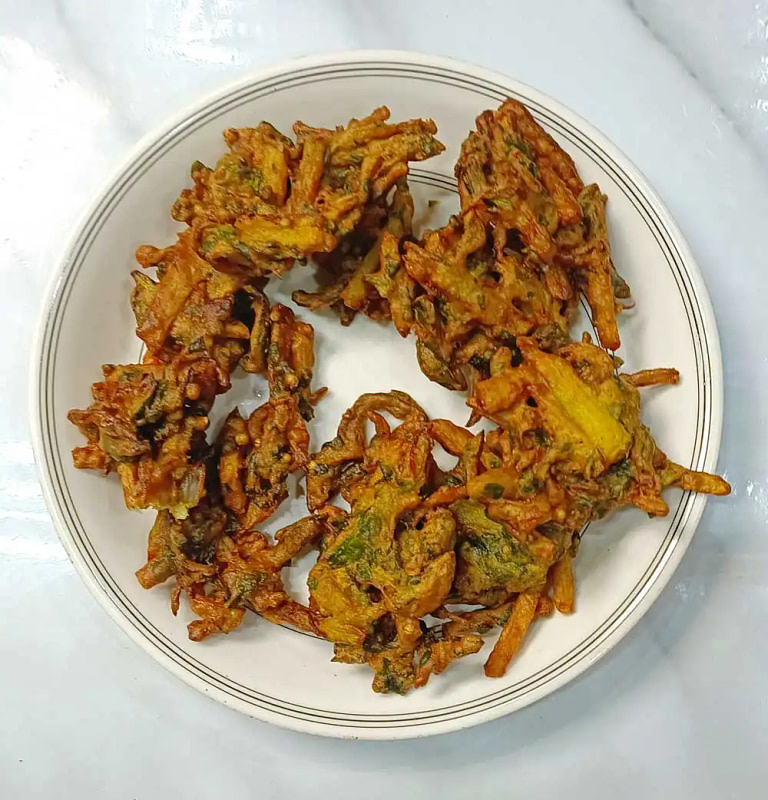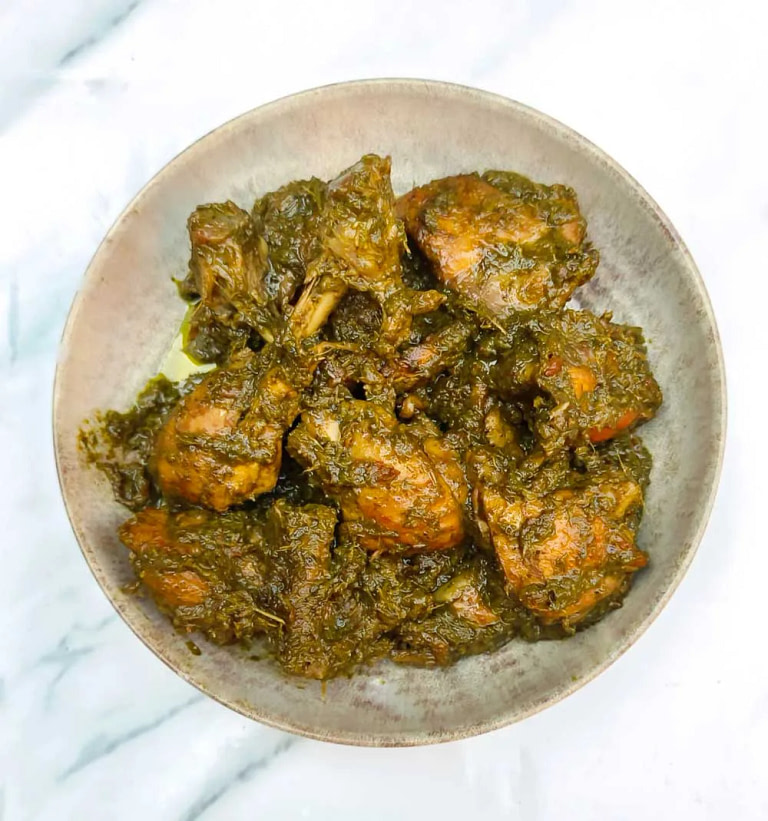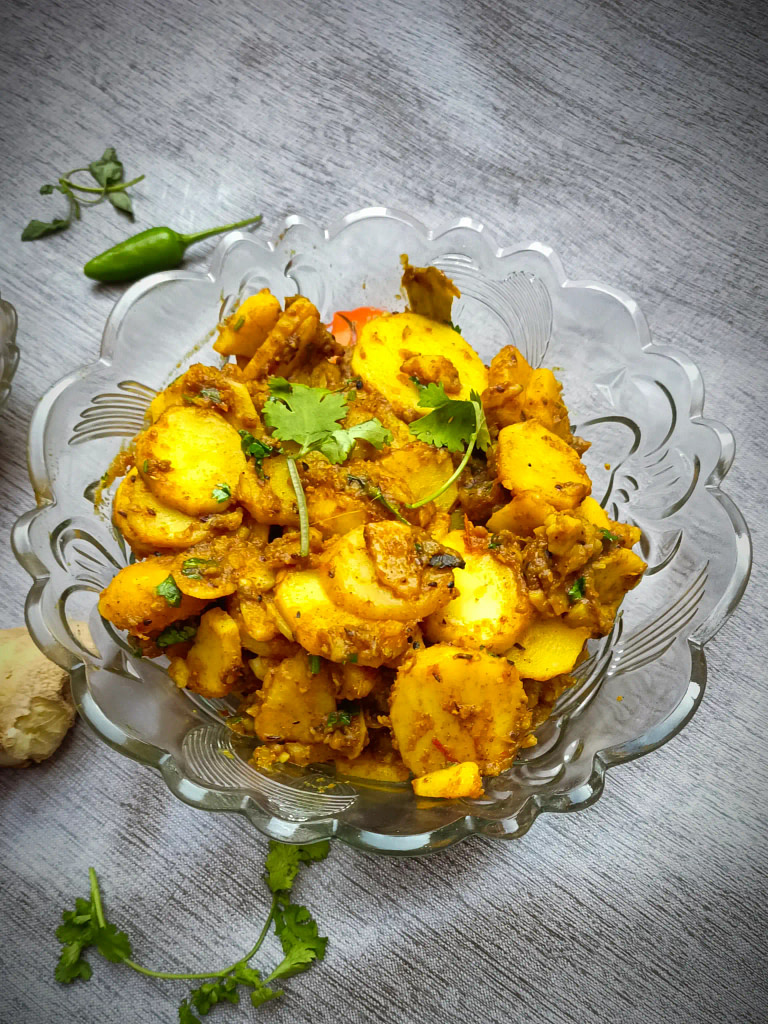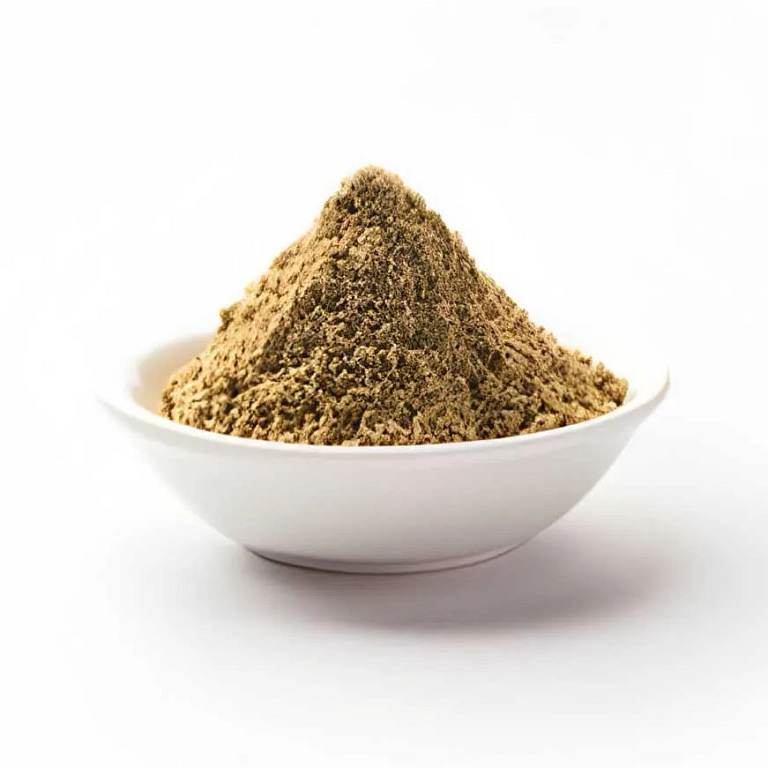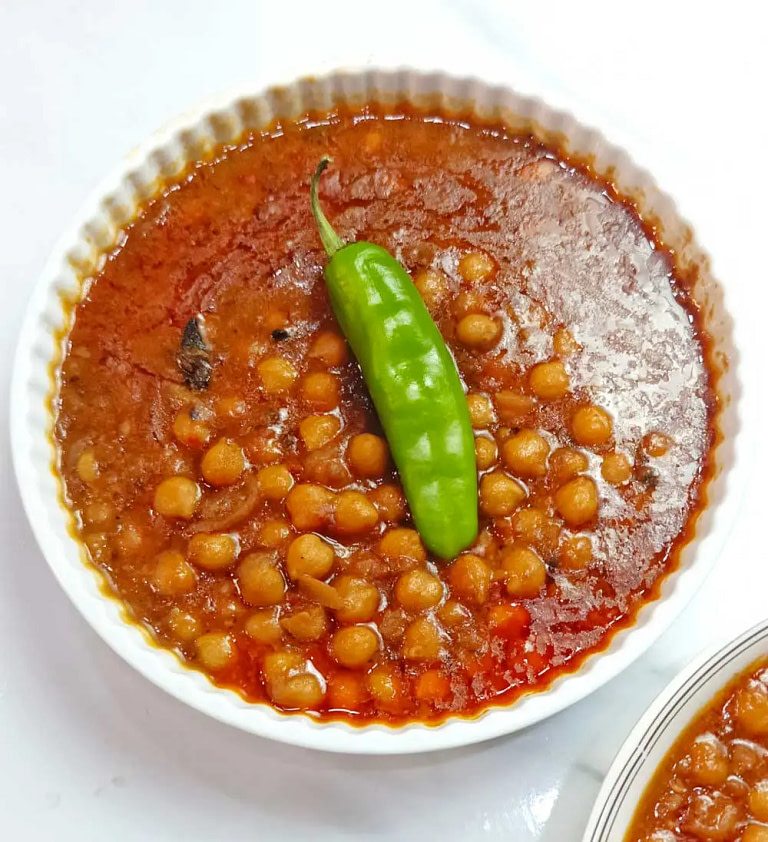Vegetable Pakora is a classic, light, and crispy street food. Very famous in India, Pakistan and around the globe. It is made with different vegetables, spices and gram flour. Vegetables include potatoes, onion, spinach, or any other veggie you like. Breeze to make in about 30 minutes and serve it different dips, a cup of hot tea. You can also enjoy it with roti and naan.
What is Vegetable Pakora
Well, in Pakistan and the Indian subcontinent, you can find many types of pakoras on food streets. Vegetable pakora is one variety. It is a delicious and vibrant snack made by combining different sliced vegetables in hand. Potatoes, onion, spinach, cabbage, and capsicum are mostly used in this pakoras.
Pakora, also known as pikora, pakoda, pakura or mixed vegetable bhajis. Basically, it is a word from Urdu that means ‘fritters’ in English. We love to eat them, especially in Ramzan at Iftar time. This is a popular everyday snack, but it’s mainly in demand during the rainy season and at special events with hot cup of tea.

Further, mixed vegetable pakoras are savory in taste, which is achieved by mixing different spices like salt, red chili, turmeric, chaat masala, cumin, and coriander seeds. My mother also adds pomegranate seeds (anardana), which give them a special sweet and sour taste.
Sliced vegetables are mixed with gram flour and a little water, then deep-fried in hot oil. This makes the pakoras crispy and golden-brown outside, while still slightly crunchy inside. Aloo Pakora, Chicken Pakora and Aloo Tikki are also famous street food in my hometown Pakistan.

How to Serve them
There are several different combinations to serve these veggie fritters. Here are a few examples in below.
- With Dips: Serve hot with different delicious dips like plum chutney, mint chutney, tamarind chutney, Onion raita, or any other yogurt-based raita.
- With Tea: It amazingly pairs well with a hot cup of regular tea, masala tea, or dood patti and tec.
- With Naan: We Pakistanis and Indians enjoy them with roti and naan when we have nothing to eat. Especially, I remember my school and college days when we enjoy them a lot during brake time.
Ingredients
The Key ingredients for Vegetarian pakoda typically include all pantry essential ingredients. And these ingredients basic details are as below.
- Potatoes: are a very important and key ingredient in vegetable pakora recipe. Here, I will add one large (about 200g) russet and salted potato, which is enough for this recipe. Preparation involves thoroughly washing and peeling the potato, then thinly slicing it. There are no strict guidelines for cutting the potato. It can be cubed or thinly sliced according to preference.
- Onions: We will use a large onion(150g), either red or yellow. Peel the outer layer of the onion, cut it in half and then slice it. Sliced onion helps to bind the pakora mixtures together and also provide crunch.
- Spinach (Palak): Spinach adds vibrant color, nutritious value and also enhances the overall flavor with its earthy taste. 250g spinach will be added to this recipe. Resin the spinach and discard its hard stems. Finally, chop the leaves finely.
- Capsicum: I will also include a small capsicum. After rinsing, I will thinly slice it. If you don’t like capsicum, you can add any other veggies like carrot or cabbage.
- Green Chilies – 3 to 4 chopped green chilies will be a part of the Pakistani pakora recipe. After resin, chop the green chilies well.
- Mint & Coriander Leaves: One tablespoon of mint and 2 tablespoon of fresh chopped coriander leaves to add earthy notes.
- Gram Flour (Besan): It acts as a binding agent and also adds a nutty flavor, making the pakora crispy and giving it an authentic texture. Use 200g gram flour or add more if needed.
- Water: I have added only 3 to 4 table spoons of water to make a smooth batter and coat the vegetables evenly for perfect frying. You can adjust water as needed. Don’t add too much water because all vegetables release moisture on their own.
- Spices: We will add salt, red chili powder, turmeric powder, cumin seeds, coriander seeds and pomegranate seeds (anardana).
- Oil: Use any neutral oil available at home. If you want real and authentic taste then use mustard oil for frying.

How To Make Vegetable Pakora
The preparation of the Vegetable Pakora recipe is straightforward and can be done quickly. Please follow my step-by-step instructions for authentic and crispy pakoras.
Add Vegetables: In a large bowl, incorporate all the sliced vegetables in it. It’s time to add gram flour (besan) and season it with salt, red chili powder, turmeric powder, cumin seeds, coriander seeds and pomegranate seeds.

Mix Well: Gently fold in the gram flour with the other ingredients without adding water. Ensure everything is well mixed and evenly coated. Don’t hesitate to use your hands for mixing. Now add 2-3 tablespoons of water and mix it thoroughly. Make sure the mixture consistency remains thick but not overly runny.

Water: Only add a little water, because we are using water to bind all the ingredients together. Our aim is not to make a runny batter. Another reason is that after adding water, vegetables will also release their own moisture, so it’s important to add sparingly.
Heat Oil: about 2 inches deep in a large frying pan over medium heat. If you don’t do the same! pakora might stick to the bottom of the pan, and it has a chance to burn and remain uncooked from the inside.

The oil temperature should be 160-170c before frying. Alternatively, you can test it by dropping a small bit of the pakora mixture into oil. If pakora floats up within 2-3 seconds, it means your oil is hot enough for frying.

Fry Pakoras: Use a regular spoon and gently drop a spoonful of pakora mixture into the preheated oil. Alternatively, you can use your right hand. Please ensure don’t overcrowd the pan and maintain medium heat. Use tongs to flip the sides periodically for even cooking. It takes about 3 to 4 minutes (sometimes more time) to cook each side. Once the pakora is golden-brown and crispy from both sides, remove them from oil.

Drain Extra Oil: Now, use a slotted spoon to remove the pakora from the oil and place them on a paper towel. Utilize a wire cooling rack for better oil drainage. Sprinkle chaat masala just before to serving and cook all the pakora mixture in small batches.

How to Store Vegetable fritters?
First of all, I would like to say that pakoras are best eaten fresh on the same day they’re made. So, I recommend you only make as much pakora as you can eat that day and don’t store them. But still, you have leftover then follow the blow guidelines for storage.
- Short time Storing: Pakora can stay well for up to 4 to 5 hours at room temperature.
- Cool Down: Ensure the pakora are not hot when you are storing them. Cool them completely.
- Storing: Place them in an airtight container, using parchment paper between layers to prevent sticking. Keep them in the fridge for the next two days. Don’t freeze them.
- Reheating: Don’t reheat it in a microwave oven because the microwave makes it too soggy and tasteless. I always use an air fryer or reheat it in a pan without any oil.

Pro Tips
- Gram Flour: Always use premium-quality fresh gram flour and sift it to remove lumps before adding it to other ingredients. If you don’t have enough besan at home, then don’t add all-purpose flour with gram flour as some people do this.
- Vegetables: Potatoes and spinach are essential for this vegetable pakora recipe. However, you can also add other vegetables you like such as carrots, capsicums, zucchini, peas, or corn.
- Coriander Seeds: In Pakistan, we add coriander and pomegranate seeds in this veg pakora recipe. If, you have any dental cavities where these seeds stuck. To avoid this issue, crush them with a mortar and pestle before adding them.
- Water: combine the mixture thoroughly just before frying. If your pakora mixture is watery, don’t worry. Add more gram flour to it and give it a good mix until the gram flour absorbs the water and combines with the other ingredients.
- Oil: It’s temperature should be around 160c to 170c. If the oil is not hot enough, the pakoras will soak up too much oil and become soggy. If the oil is too hot, the pakoras will burn on the outside but remain uncooked inside.
- Batch Cooking: Don’t cook too many pakora at once, as this can overload the pan. In this case, the temperature will drop instantly, and the vegetables fritters will become soggy. Always cook the pakora mixture in small batches.
- Drain Oil: Always drain the oil completely using a slotted spoon and serve it hot. A pinch of chaat masala makes these Indian vegetable pakoras more delicious.
Crispy Vegetable Pakora Recipe
Equipment
- 1 Large bowl for mixing
- 1 large frying pan for deep frying
Ingredients
- 200 Grams Besan – Gram flour
- 200 Grams Russet Potatoes
- 150 Grams Red Onion
- 250 Grams Palak – Spinach
- 1 Large Green Bell Pepper
- 3-4 Pieces Green Chilies
- 3 Tablespoon Fresh Coriander leaves or Mint
- 2 Teaspoon Salt
- 2 Teaspoon Red Chili Powder
- ⅓ Teaspoon Turmeric Powder
- 1 Teaspoon Cumin Seeds
- 1 Tablespoon Coriander Seeds
- 1 Tablespoon Pomegranate seeds – Anardana
- 1 kg Oil
- 3-4 Tablespoon Waster or as Required
Instructions
- Add Vegetables: In a large bowl, incorporate all the sliced vegetables in it. It’s time to add gram flour (besan) and season it with salt, red chili powder, turmeric powder, cumin seeds, coriander seeds and pomegranate seeds.
- Mix Well: Gently fold in the gram flour with the other ingredients without adding water. Ensure everything is well mixed and evenly coated. Don’t hesitate to use your hands for mixing. Now add 2-3 tablespoons of water and mix it thoroughly. Make sure the mixture consistency remains thick but not overly runny.
- Water: Only add a little water, because we are using water to bind all the ingredients together. Our aim is not to make a runny batter. Another reason is that after adding water, vegetables will also release their own moisture, so it’s important to add sparingly
- Heat Oil: about 2 inches deep in a large frying pan over medium heat. If you don’t do the same! pakora might stick to the bottom of the pan, and it has a chance to burn and remain uncooked from the inside.
- Oil Testing: The oil temperature should be 160-170c before frying. Alternatively, you can test it by dropping a small bit of the pakora mixture into oil. If pakora floats up within 2-3 seconds, it means your oil is hot enough for frying.
- Fry Pakoras: Use a regular spoon and gently drop a spoonful of pakora mixture into the preheated oil. Alternatively, you can use your right hand. Please ensure don’t overcrowd the pan and maintain medium heat. Use tongs to flip the sides periodically for even cooking. It takes about 3 to 4 minutes (sometimes more time) to cook each side. Once the pakora is golden-brown and crispy from both sides, remove them from oil.
- Drain Extra Oil: Now, use a slotted spoon to remove the pakora from the oil and place them on a paper towel. Utilize a wire cooling rack for better oil drainage. Sprinkle chaat masala just before to serving and cook all the pakora mixture in small batches.
Notes
- Gram Flour: Always use premium-quality fresh gram flour and sift it to remove lumps before adding it to other ingredients. If you don’t have enough besan at home, then don’t add all-purpose flour with gram flour as some people do this.
- Vegetables: Potatoes and spinach are essential for this vegetable pakora recipe. However, you can also add other vegetables you like such as carrots, capsicums, zucchini, peas, or corn.
- Coriander Seeds: In Pakistan, we add coriander and pomegranate seeds in this veg pakora recipe. If, you have any dental cavities where these seeds stuck. To avoid this issue, crush them with a mortar and pestle before adding them.
- Water: combine the mixture thoroughly just before frying. If your pakora mixture is watery, don’t worry. Add more gram flour to it and give it a good mix until the gram flour absorbs the water and combines with the other ingredients.
- Oil: It’s temperature should be around 160c to 170c. If the oil is not hot enough, the pakoras will soak up too much oil and become soggy. If the oil is too hot, the pakoras will burn on the outside but remain uncooked inside.
- Batch Cooking: Don’t cook too many pakora at once, as this can overload the pan. In this case, the temperature will drop instantly, and the vegetables fritters will become soggy. Always cook the pakora mixture in small batches.
- Drain Oil: Always drain the oil completely using a slotted spoon and serve it hot. A pinch of chaat masala makes these Indian vegetable pakoras more delicious.

